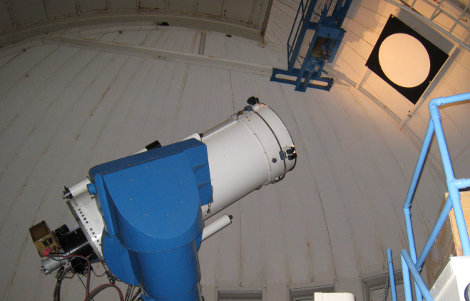
 Copyright © Michael Richmond.
This work is licensed under a Creative Commons License.
Copyright © Michael Richmond.
This work is licensed under a Creative Commons License.
RIT is one of the members of the WIYN 0.9-m telescope consortium, which operates the WIYN 0.9-m telescope at Kitt Peak National Observatory.

The 0.9-m telescope is the little brother of the more famous WIYN 3.5-m telescope , which is just a few meters down the road.
We were recently contacted by an astronomer who studies near-earth objects. He needed to follow asteroids which zip past the Earth so fast that they move across the sky at a rate which differs from that of stars and ordinary objects. Pictures taken by a telescope tracking at the ordinary sidereal rate will show stars as little dots of light, but fast-moving asteroids as long trails.
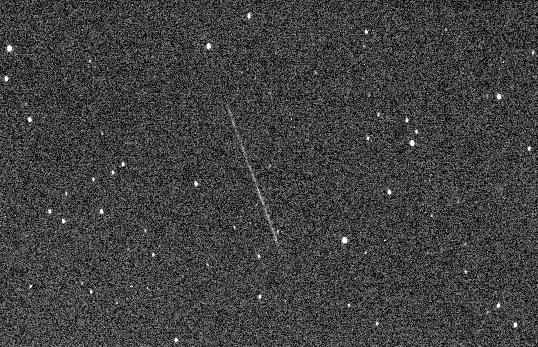
Image of asteroid 2007 TU24 courtesy of
the University of Alabama and SARA telescope.
In order to study these objects properly, it is necessary to move one's telescope at a non-sidereal rate, so that light from the asteroid will always fall into the same portion of one's detector.
The question was --- can the WIYN 0.9-m telescope move at a specified non-sidereal rate? Can it follow even near-Earth objects, which move very rapidly across the sky?
I had an observing run at the WIYN 0.9-m telescope from Nov 8 - 13, together with two graduate students in RIT's AST program (Valerie Rapson and Dave Principe) and one undergraduate in the Physics department (Jack Wong). We decided to run a test of the telescope's tracking ability.
The WIYN 0.9-m telescope is controlled by software written by Astronomical Consultants and Equipment . Among its many (excellent) features is an item which can change the tracking rate:
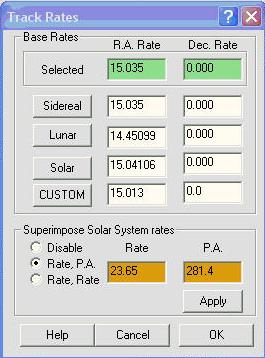
The default tracking rates are shown in the boxes labelled Sidereal, near the top of this window. The RA value of 15.035 arcseconds per second is just a little bit faster than one might expect (why?). In the lower half of the window, one can enter rates which are added to the default: the units are arcseconds per minute. To follow a typical main-belt asteroid, which moves relative to the stars by about 1 arcsecond each minute, one would enter "1.0" into the left-hand (RA) rate box, and "0.0" into the right-hand (Dec) rate box.
However, near-earth objects move much faster. As a test, I chose an object which was moving very fast. I went to the Minor Planet Center's NEO Confirmation Page to get a list of objects which have been recently discovered moving very fast. The list looks something like this:
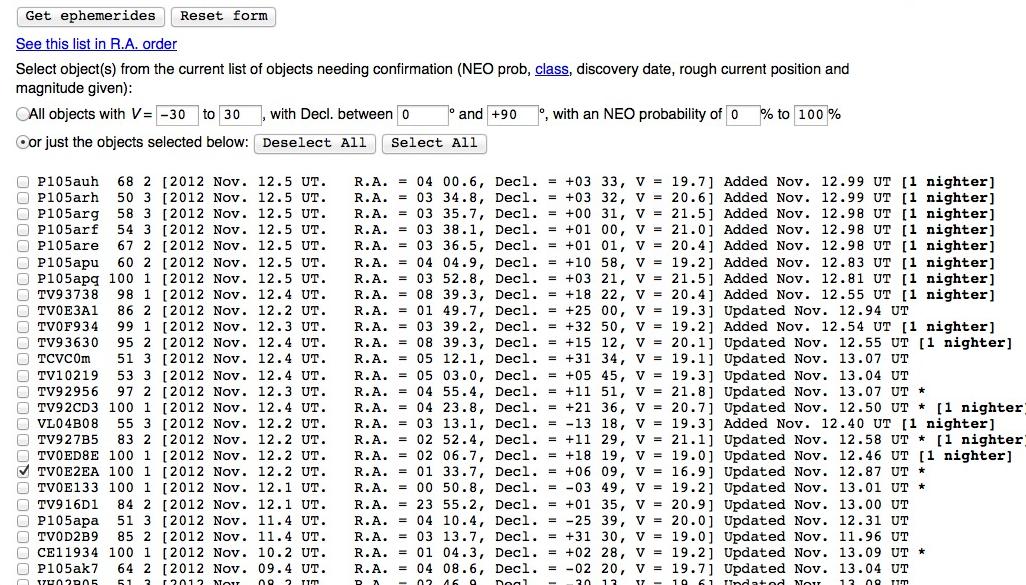
The object I chose for the test has a temporary designation TV0E2EA; I picked it because it was by far the brightest object in the list. It was moving very quickly: 67 arcseconds per minute in RA and 28 arcseconds per minute in Dec!
Using the S2KB CCD camera and no filter, I took a quick 30-second image at the predicted position, tracking at the normal sidereal rate. Can you find the asteroid?
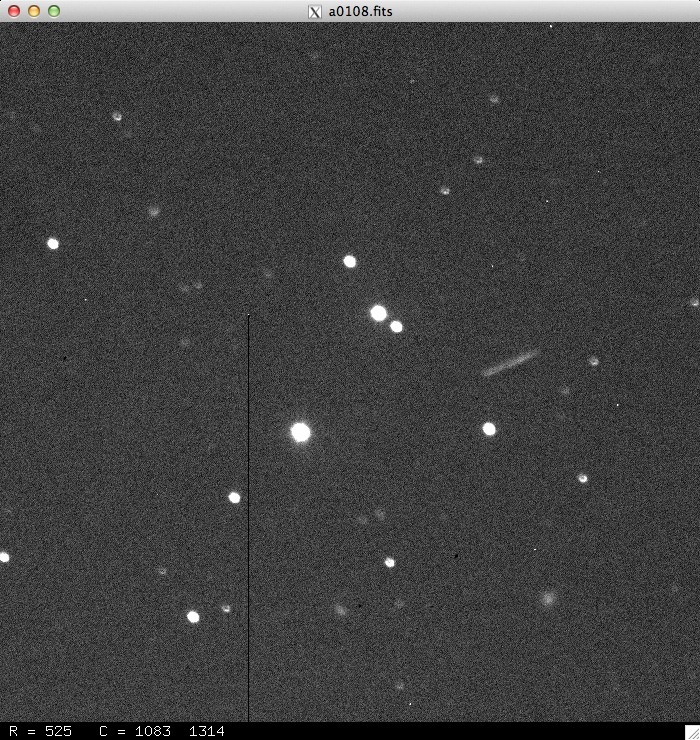
Now, for the moment of truth: I typed the predicted proper motions of the asteroid into the "Track Rate" window, clicked "Apply" to modify the rate, and took another 30-second exposure.
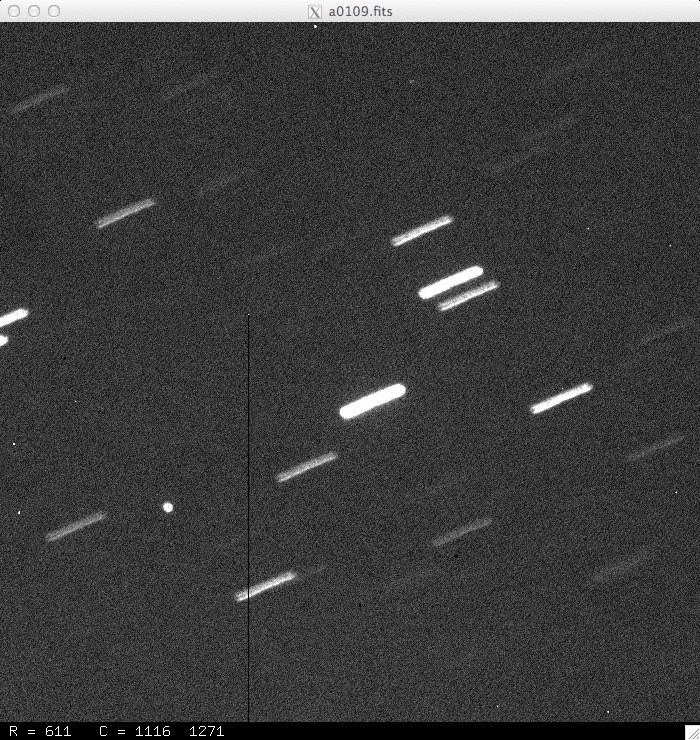
Hooray! It worked!
 Copyright © Michael Richmond.
This work is licensed under a Creative Commons License.
Copyright © Michael Richmond.
This work is licensed under a Creative Commons License.